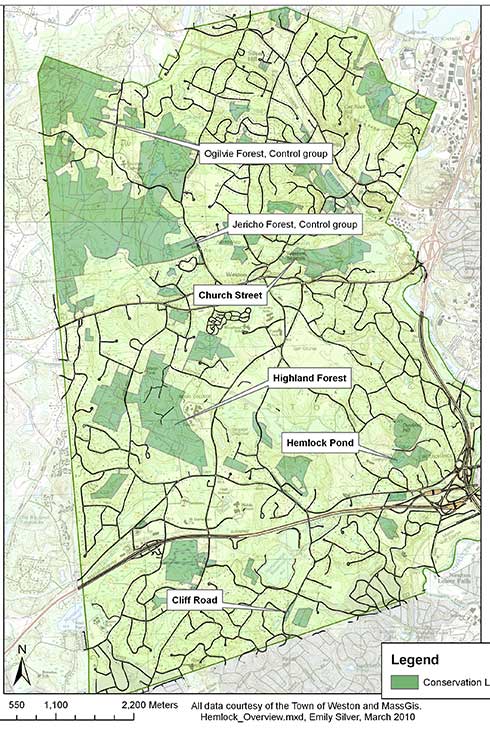Hemlock Research
 Hemlock Study Sites
Hemlock Study Sites
(Download full-size image)
The Problem: Hemlock Woolly Adelgid
The Hemlock Woolly Adelgid (HWA) is a pest brought to North America from Japan around 1920, though it arrived to the East Coast around 1950. It was observed in New England around 1988 and has shown increasing resilience to cold weather. The adelgid feeds on stored starches in the needles of Eastern Hemlock (Tsuga canadensis). If a tree is severely affected, it will eventually decline with this rapid loss of nutrients. Below is a comparison of canopy health due to HWA infestation.
Weston Hemlock Treatment
Weston committed to treating its infested trees in 2008. Treatment involves the application of a Imadacloprid, a pesticide that is benign to humans and breaks down rapidly in the environment. This pesticide is injected in the soil directly beneath the infested tree. Weston treated over 200 trees in 2008 and an additional 400 in 2009.
Our Study
In order to determine the efficacy of this treatment, SEP has now set up 22 long-term measurement plots in both treated and untreated areas. We have collected data on individual tree stems as well as overall site variables such understory vegetation and downed wood. Our parameter for Hemlock health is a simple canopy fullness classification with 1 being the most healthy (100 percent foliated) and 5 being dead. We have also taken extensive photos of each treated stem at many of our study sites.
We have involved Weston town schools in the data collection for this project.